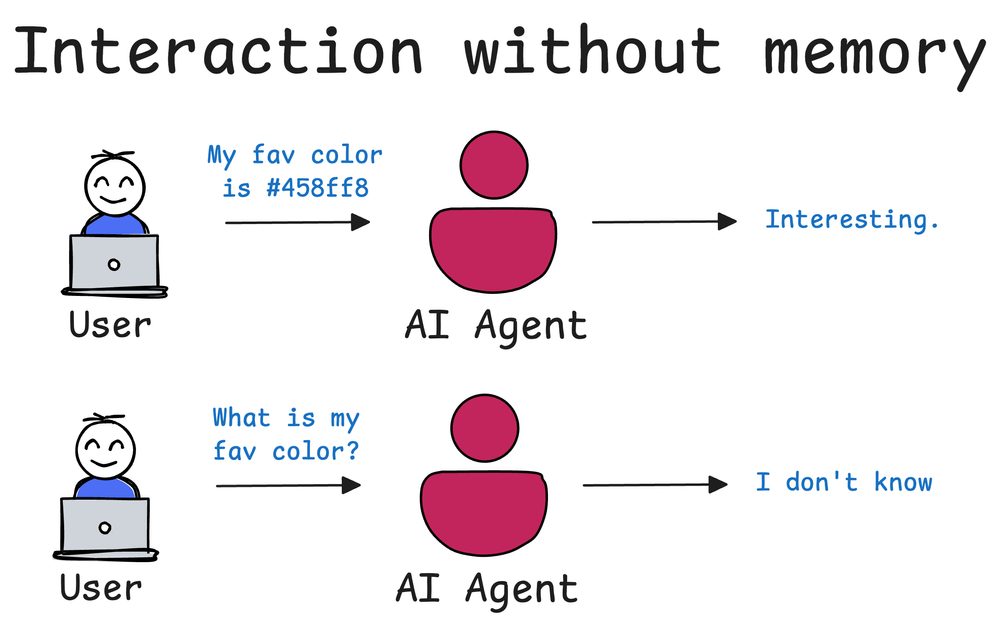AI Agents Crash Course—Part 8 and 9
5-types of Memory for AI Agents (with implementation).
Part 8 and Part 9 of the AI Agents crash course are available.
It’s primarily focused on Memory for AI agents. Read below:
But what exactly is Memory, and why is it so powerful for Agentic systems?
To understand this, consider an Agentic system without Memory (below):
In iteration #1, the user mentions their favorite color.
In iteration #2, the Agent knows nothing about iteration #1.
This means the Agent is mostly stateless and it has no recall abilities.
But now consider an Agentic system built with Memory (below):
In iteration #1, the user mentions their favorite color.
In iteration #2, the Agent can recall iteration #1.
Memory matters because if a memory-less Agentic system is deployed in production, every interaction with that Agent will be a blank slate.
It doesn’t matter if the user told the Agent their name five seconds ago—it’s forgotten. If the Agent helped troubleshoot an issue in the last session, it won’t remember any of it now.
With Memory, your Agent becomes context-aware and practically applicable.
But Memory isn’t an abstract concept.
If you dive deeper, it follows a structured and intuitive architecture with several types of Memory.
Short-Term Memory
Long-Term Memory
Entity Memory
Contextual Memory, and
User Memory
Each serves a unique purpose in helping agents “remember” and utilize past information.
And this is precisely what we are covering in Part 8 and Part 9 (with implementations). Since it’s a highly important topic, we have split this into two parts:
Both parts cover:
5 types of Memory from a theoretical, practical, and intuitive perspective.
How each type of Memory helps an Agent.
How an Agent retrieves relevant details from the Memory.
The underlying mechanics of Memory and how it is stored.
How to utilize each type of Memory for Agents (implementations).
How to customize Memory settings.
How to reset Memory if needed.
And more.
Read them here:
Also, if you are new here, here’s what we have done so far in this crash course:
In Part 1, we covered the fundamentals of Agentic systems, understanding how AI agents act autonomously to perform tasks.
In Part 2, we extended Agent capabilities by integrating custom tools, using structured outputs, and built modular Crews.
In Part 3, we focused on Flows, learning about state management, flow control, and integrating a Crew into a Flow.
In Part 4, we extended these concepts into real-world multi-agent, multi-crew Flow projects.
In Part 5 and Part 6, we moved into advanced techniques that make AI agents more robust, dynamic, and adaptable, like Guardrails, Async execution, Callbacks, Human-in-the-loop, Multimodal Agents, and more.
In Part 7, we covered Knowledge of agentic Systems.
Just like the RAG crash course, we are covering everything about AI agents in detail as we progress to fully equip you with building agentic systems.
Of course, if you have never worked with LLMs, that’s okay.
We cover everything in a practical and beginner-friendly way.
Thanks for reading!





